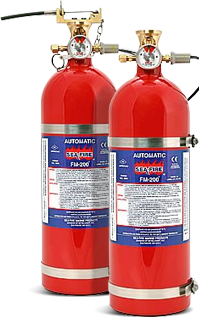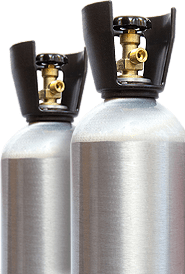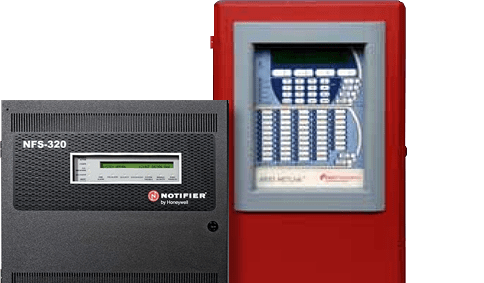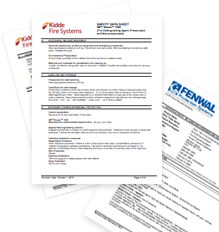Protect Your Commercial Kitchen from Fires

Commercial kitchens pose many risks from a life safety and fire safety standpoint. The largest danger in a commercial kitchen is a fire. Commercial kitchen owners and operators must be aware of the dangers and the risks of a fire and take the appropriate measures to prevent such occurrences.
Understanding the Commercial Kitchen Fire Threat
In many instances, fires in commercial kitchens can be traced to a limited number of causes, most of them attributable to circumstances that could be mitigated by proper planning and care. Examining the causes of these fires provides easy insight into the need for specific policies and procedures in commercial kitchens to help prevent these situations.
Explore further
Common Ignition Sources
Looking at the source of ignition for the most common kitchen fires often signals changes that need to be made in routines or operations to prevent such fires. Commercial kitchens are full of possible ignition sources. Hot cooking surfaces, deep fryers, ventilation systems, and electrical equipment are all common ignition sources. All to often, a commercial kitchen fire has a compound reason that involves both equipment failure or lack of maintenance and human error.
Fuel Sources
The most prevalent source of fuel is cooking greases and oil. Add to this the presence of food debris waste and cleaning agents that are often caustic and reactive themselves, and you can create a perfect storm of fire safety. The need to arrange commercial kitchens for efficiency puts most of the flammable cooking oils and grease in the areas where fire spread can occur quickly. Lack of maintenance can contribute to these problems as well, especially in hard to clean areas and in vent hood systems.
Preventing Kitchen Fires
As with any potential fire threat, prevention is the number one preventive action to be considered. Protocols for equipment and location maintenance and cleaning, fire suppression systems, and facility maintenance routines can help prevent the majority of losses due to accidental fire. Proper inspection and maintenance practices include regular physical inspections, routine maintenance, and documentation to substantiate these practices.
Proper Equipment Maintenance
In commercial kitchens, inspection and maintenance routines are important due to the environment and the presence of highly flammable materials and the proximity of ignition sources. Regular inspections must include kitchen equipment such as stoves, ovens, deep fryers and the like. Attention must be paid to ventilation systems, especially those serving cooking areas where grease accumulation occurs rapidly. All automatic fire suppression systems should be inspected according to the manufacturer's recommendations. The electrical systems servicing the equipment in commercial kitchens should also be a target of regular inspection, maintenance, cleaning, and repair.
Employee Training
The best plans will be useless unless the employees are properly trained in the safety protocols and actively adhere to their requirements. Every employee should be trained in your fire safety procedures including the operation of fire suppression systems, proper cleaning requirements, and the inherent risks of fire in a commercial kitchen.
Employees should be trained in evacuation routes, the use of installed fire suppression systems, and using handheld extinguishers. Hands on education including proper documentation of the training should be mandatory.
Protecting Your Investment with Fire Safety Systems
Almost all building and fire safety codes used require a certain level of installed fire suppression protection in commercial kitchens. These automatic systems help protect your investment and your livelihood with minimal human intervention. There are several types of fire suppression systems currently in use for commercial kitchen protection.
People also search
Commercial Kitchen Hood Suppression Systems
Fire suppression systems installed in vent system in commercial kitchens vary in their style and approach to fire suppression. The advantage of these systems is their ability to provide fire suppression automatically.
Typically, ventilation fire suppression systems fall into two categories.
- Wet chemical systems are the most common type. The wet agent cools the area and prevents fire re-ignition. The chemical agent reacts with cooking oils to form a barrier that effectively smothers the fire quickly.
- Carbon Dioxide Systems (CO2) employee carbon dioxide to smother and cool the fire. Carbon dioxide works by removing the available oxygen for the fire. The expanding gas also cools the area to help prevent reignition.
Early Warning Systems
Fire protection systems also employ early warning systems to detect and notify occupants of a fire. These systems are designed to provide quick and early detection of heat rise and smoke, often before humans are aware of a dangerous situation. This allows automatic systems to operate quicker, minimizing damage to valuable equipment and inventory, plus reducing down time due to damage and cleanup efforts.
Commercial kitchens present higher risks for accidental fire than many other occupancies or exposures. If you need assistance in designing, installing, and maintaining a fire prevention plan or fire suppression system in your commercial kitchen, call Control Fire Systems today and speak to one of our trained professional sales team.














